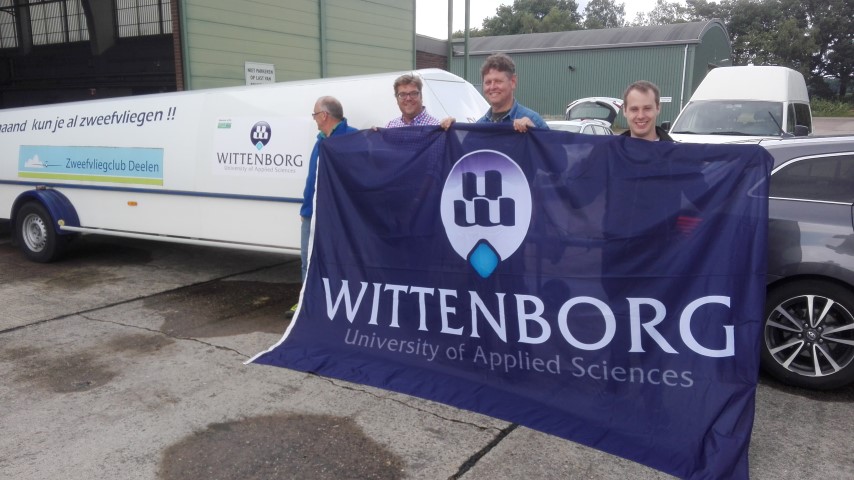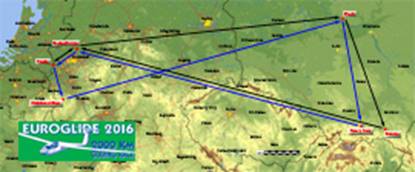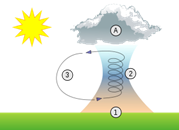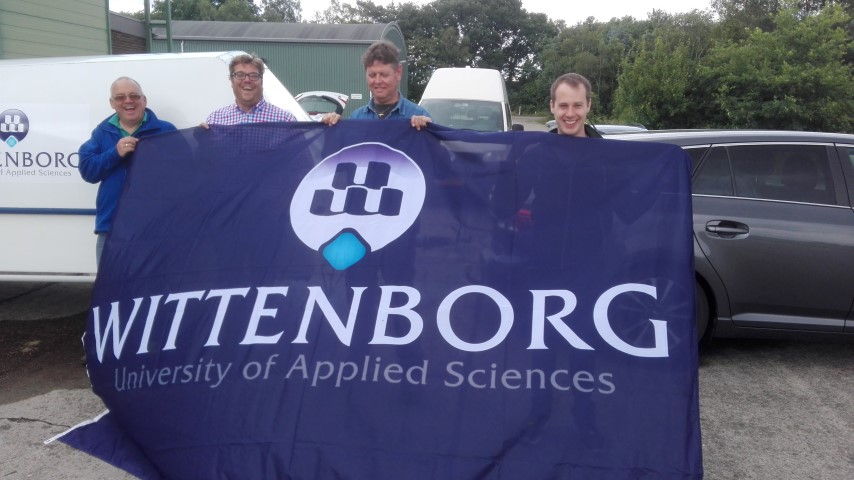WUSH - Wittenborg's Karel van der Zande to make a flight of 2400KM in a glider
 Wittenborg's facility manager and manager of WUAS Student Housing ('WUSH'), Karel van der Zande is taking up an unusual and exhilarating challenge this week. Karel is racing across Europe in a small two seater glider (plane without an engine). The race will stretch from the Netherlands to Poland, a flight of over 2400 KM, and the first glider to return to the Netherlands is the winner.
Wittenborg's facility manager and manager of WUAS Student Housing ('WUSH'), Karel van der Zande is taking up an unusual and exhilarating challenge this week. Karel is racing across Europe in a small two seater glider (plane without an engine). The race will stretch from the Netherlands to Poland, a flight of over 2400 KM, and the first glider to return to the Netherlands is the winner.
The race is called 'Euroglide 2016', and the goal is to fly the distance in the shortest possible time and Karel will fly this contest in a two seater glider called a Duo Discus, registration PH 1171, with three other pilots; Patrick Hoeve, Ronald de Ronde and Constantijn Neeteson.
WUAS is sponsoring Karel's exciting Euroglide 2016 team and the WUAS logo can be seen on the van and equipment trailer following him.
The Competition
The start of the competition is in Venlo, in this group there 14 gliders. The first turning point is at Borkenbergen Germany, the second Plock, near Warszawa, the third in the south of Poland Krosno, back to Borkenbergen and Venlo. (Black line in the picture) - 'We can fly the competition in 4 to 14 days - all depending on good flying weather', according to Karel van der Zande.


How can a glider fly such a distance without engines?
Gliders need thermals to gain altitude. Thermals are rising columns of air (see picture). A thermal is created by the sun, because the sun heats the soil and that caused the air to rise. A glider can gain 1 to 2 kilometers of altitude in a thermal.
A glider is an aircraft without engines, you can compare it with a bicycle, which also doesn’t have engines. If you are on a hill and driving downwards with your bicycle, you can travel a distance without doing anything. A glider does the same: it uses the altitude gained in a thermal to travel to the next thermal. During the travel, it will lose altitude and that has to be gained in the new thermal. A glider can fly up to 50 km on every thousand meter altitude. If the weather conditions are good, a glider can cover a distance between 500 and 750 km on one day. It will take 5 to 10 hours of flying to cover such a distance.
Karel - How does a typical day for the team look like?

"The day starts with the flight preparation. The team will discuss the weather forecast and the route. Two members of the team will fly the glider. The other two will follow the glider by road in a van and trailer. A glider will be towed with a rope by a motor-powered aircraft into the air. The glider will detach the rope and now it flies without the help of the motor-powered aircraft. The pilots will start to search for thermals."
"If the pilots do not succeed in finding a new thermal, they have to land on an airfield or on an available farm's grass field. The teammates, who travelled in the car, will pick up the glider and the pilots. The team will start looking for accommodation and looking for an airfield where they can find a motor-powered aircraft to start the next day."
"At one moment every day we have to decide to stop and land the plane, preferably on an airfield. The next day it starts all over again, we hope, until the race is completed. The big fun is you never know where you will sleep the next day, all depending on what the weather brings."
 Is it possible to follow the team?
Is it possible to follow the team?
"Yes! An update will be posted on http://euroglide.nl/dayrep.php at the end of every day (team DL). It might be possible to see the aircraft on websites like flightradar24.com"
WUP 19/6/2015
by James Wittenborg & Karel van der Zande